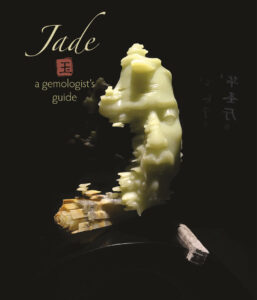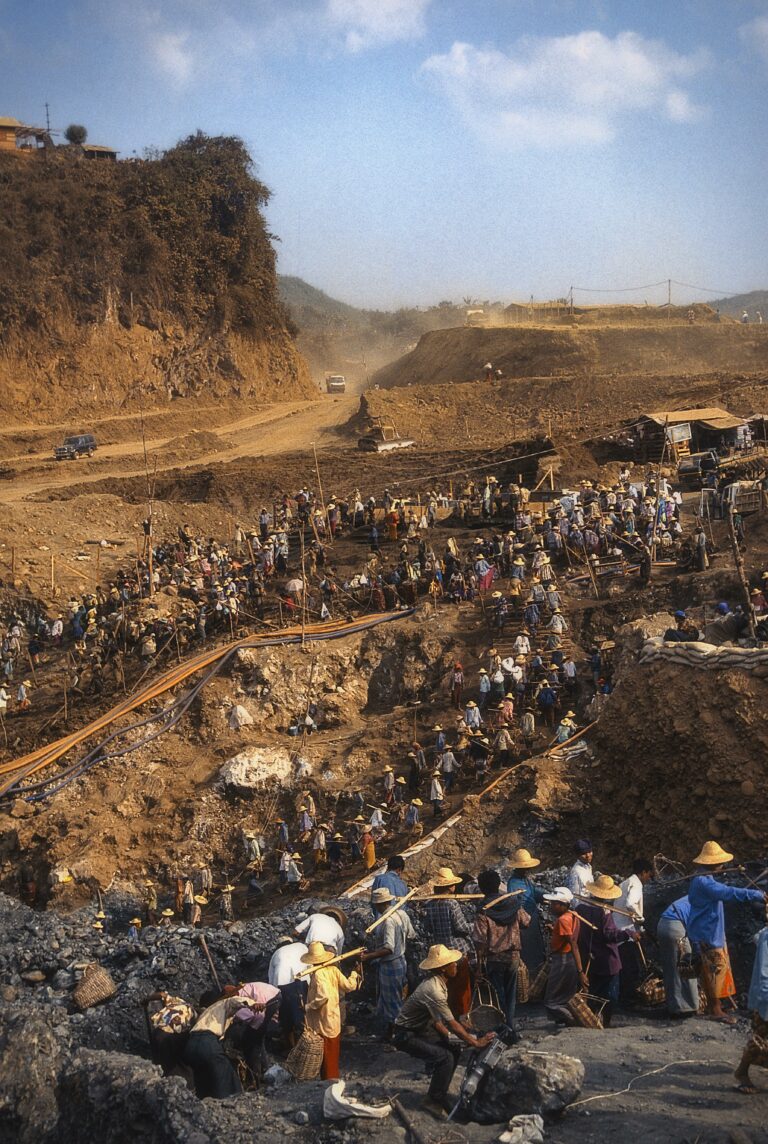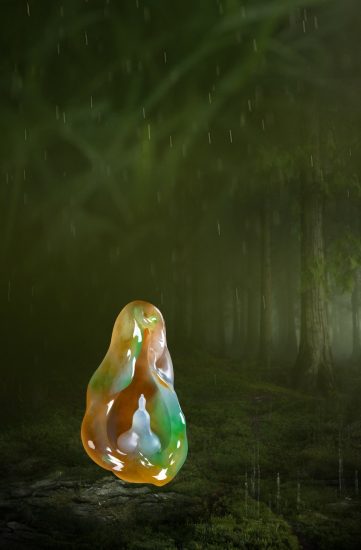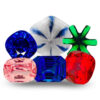Jade ⽟ a gemologist’s guide: A Book Review by Jeffery Bergman

Until now, there has never been a book which addresses jade as a gemological material with extensive information on the history, sources, appraisal and identification of natural, treated, and the various types of jade imitations. But, Jade • A Gemologist’s Guide is not just a Hughes family book covering these subjects. It is, rather, a comprehensive treatise featuring contributions from a veritable who’s who of the complex intercontinental world of jade, including twenty-two archeologists, authors, gemologists, research scientists, professors, museum curators, carvers, collectors, auctioneers and dealers.
Yù (⽟), the character for jade, is one of the oldest in the Chinese language dating back ~5,000 years. It represents the concept of a tough translucent rock, often but not always green, that is carved and polished into tools, weapons and decorative objects. Gemologically speaking, we divide jade into two categories; nephrite and jadeite. But to the Chinese, at least half a dozenmaterials were, and still are considered jade.


In true Hughes style, the images are numerous, from sublime to stunning presenting readers with a cornucopia of history, maps, mines, rough, cut and carved jade treasures both ancient and modern. And of course, there are the people. Miners, traders, explorers, adventurers, artisans, and a few token gemologists. One of my favorite illustrations is a painting of Ngāti Maniapoto chief Wahanui Reihana Te Huatare, a fighting chief and skilled orator wearing a New Zealand nephrite hei-tiki around his neck, and holding a massive nephrite pounamu tilted forward in a strike position.


Burma is well know for jadeite, China and New Zealand for nephrite, so many readers will likely be surprised to learn that nephrite is also found in Switzerland, the UK and Zimbabwe, and jadeite in Japan, Italy and California. In fact, there are actually several dozen locations around the world, and on every continent except Antarctica, where jade has been discovered.
While bangles are considered the number one form of wearable jade, carvings are certainly the best utilization of material as they maximize weight retention removing the lower grade material while retaining the finest colors and translucency. The great revival in China’s jade carving art has been boosted by the development of motor-driven equipment such as the flexible-shaft engraving machine with diamond impregnated grinding burrs and points, and the refinement of tools for specific uses such as ultrasonic drilling equipment and vibratory polishers.


For serious gemologist readers, the controversy over jadeite, omphacite and/or kosmochlor iswell explained. As a ruby and sapphire aficionado, I was particularly interested to learn jadeite from Myanmar can contain rutile crystal inclusions. Also comprehensively covered are the subjects of jade treatments, synthetics and stimulants, and the grading of the various types of natural jades as well.



Giving credit where credit is due, contributors other than editor and publisher Richard W. Hughes include gemologist Dr. Ahmadjan Abduriyim, jade carver Dale Blankenship, museum curator Dr. George E. Harlow, collector and dealer Eric J. Hoffman, gemologist E. Billie Hughes, archeologist Chenglong “Chris” Jiang, research scientist John I Koivula, jade dealer Nikolai B. Kouznetsov, research scientist Liu Yicen, jade miner Kirk Makepeace, jade dealer Jeff Mason, gemologist Dr. Dominic W. K. Mok, professor Qi Lijian, archaeologist Mary Lou Ridinger, master jade carver Donn Salt, gemologist Roland Schluessel, master jade carver Andrew Shaw, professor Dr. Shi Guanghai, curator Susan Stronge, professor Dr. Mingying Wang, designer Stewart Young, and gemology professor Dr. Zhou Zhengyu, and a host of others who loaned specimens, collection pieces and reference samples photographed and included in this book.
Destined to be proclaimed the “Bible” of jade, I give Jade ⽟ a gemologist’s guide an enthusiastic Two Thumbs Up, 5-Star endorsement. Buy it, read it, give it away. I am fully confident you will be satisfied, ingratiated and inspired.


